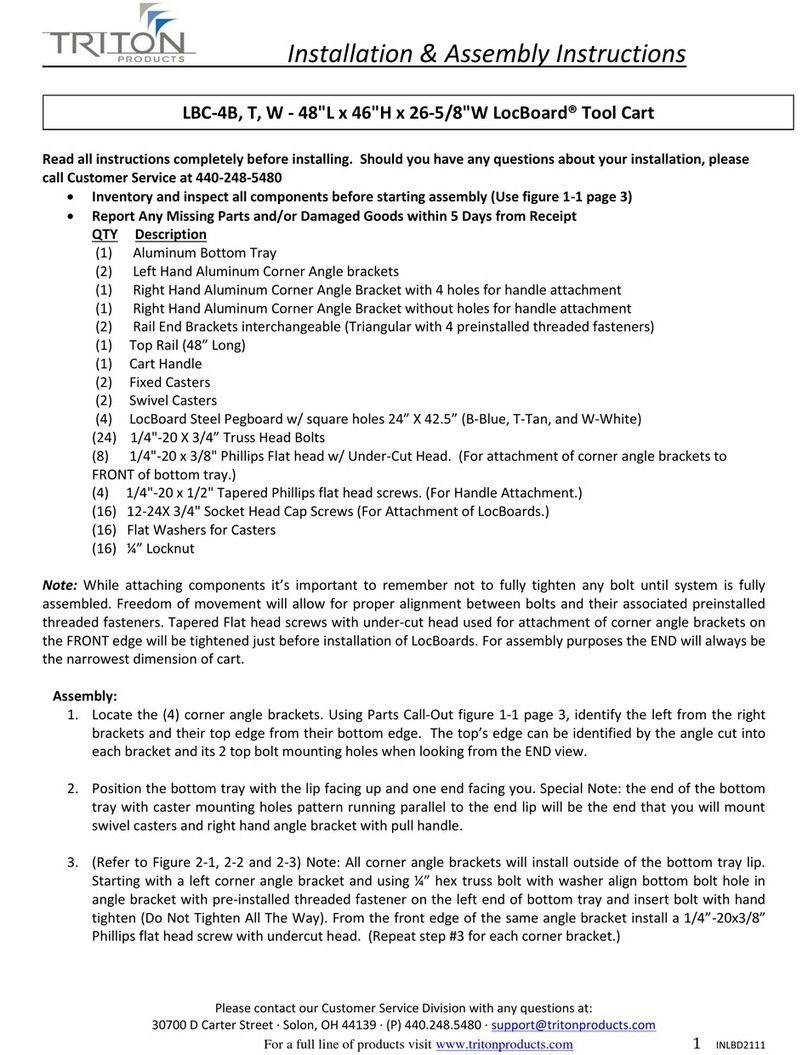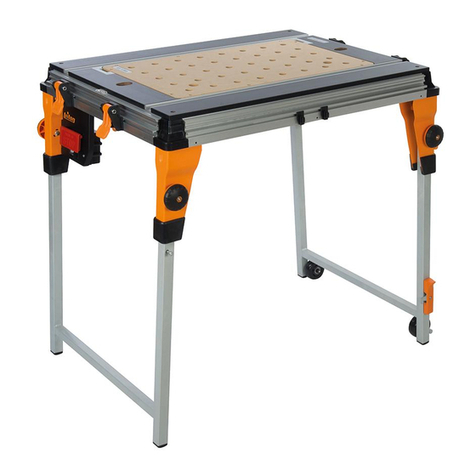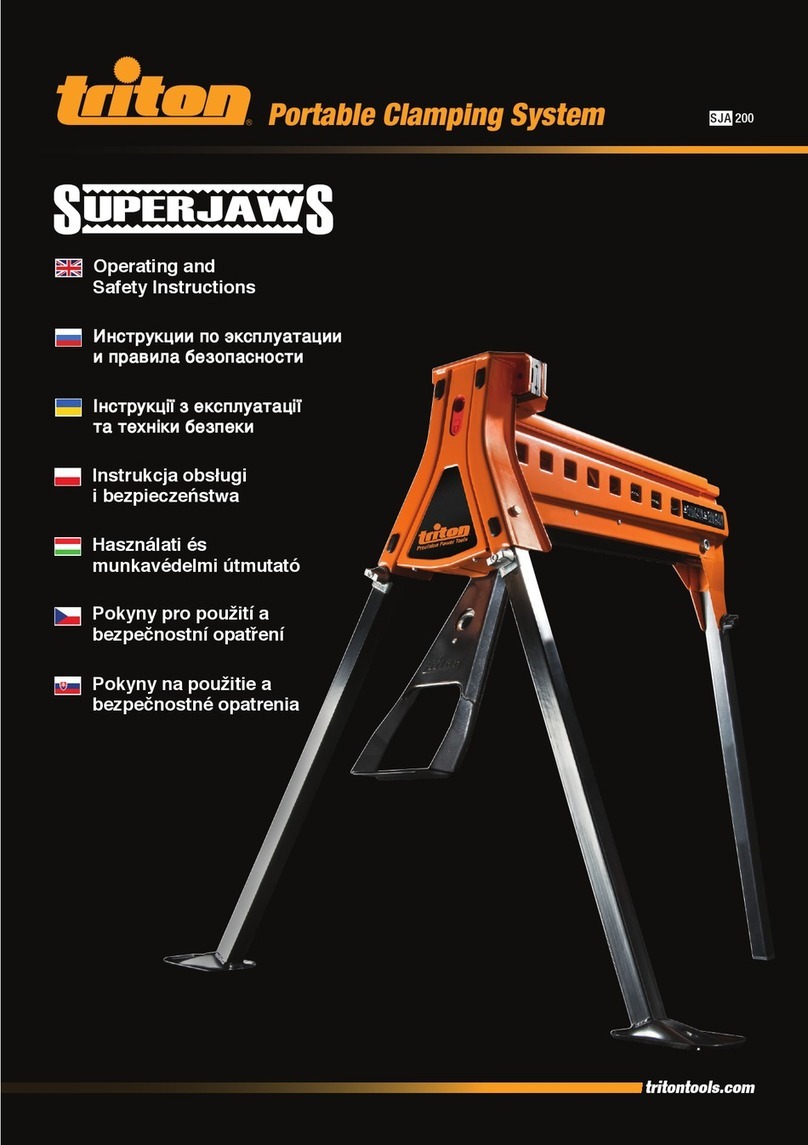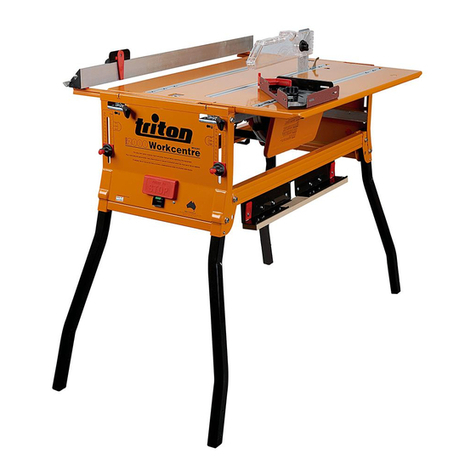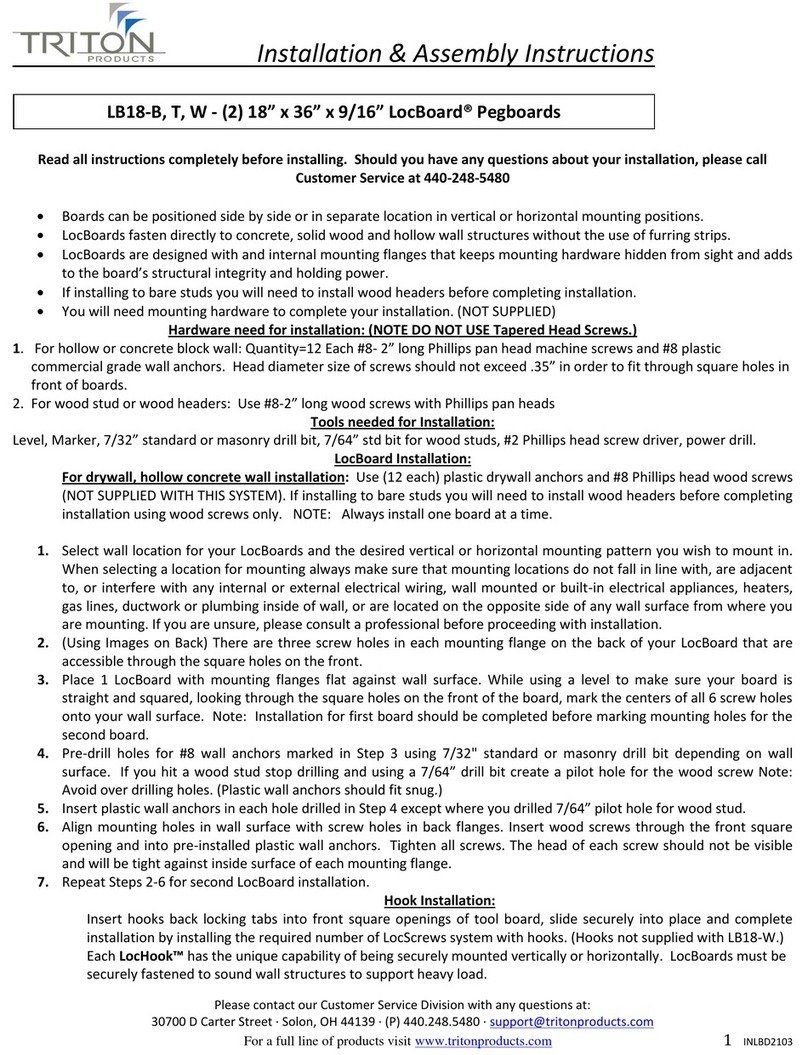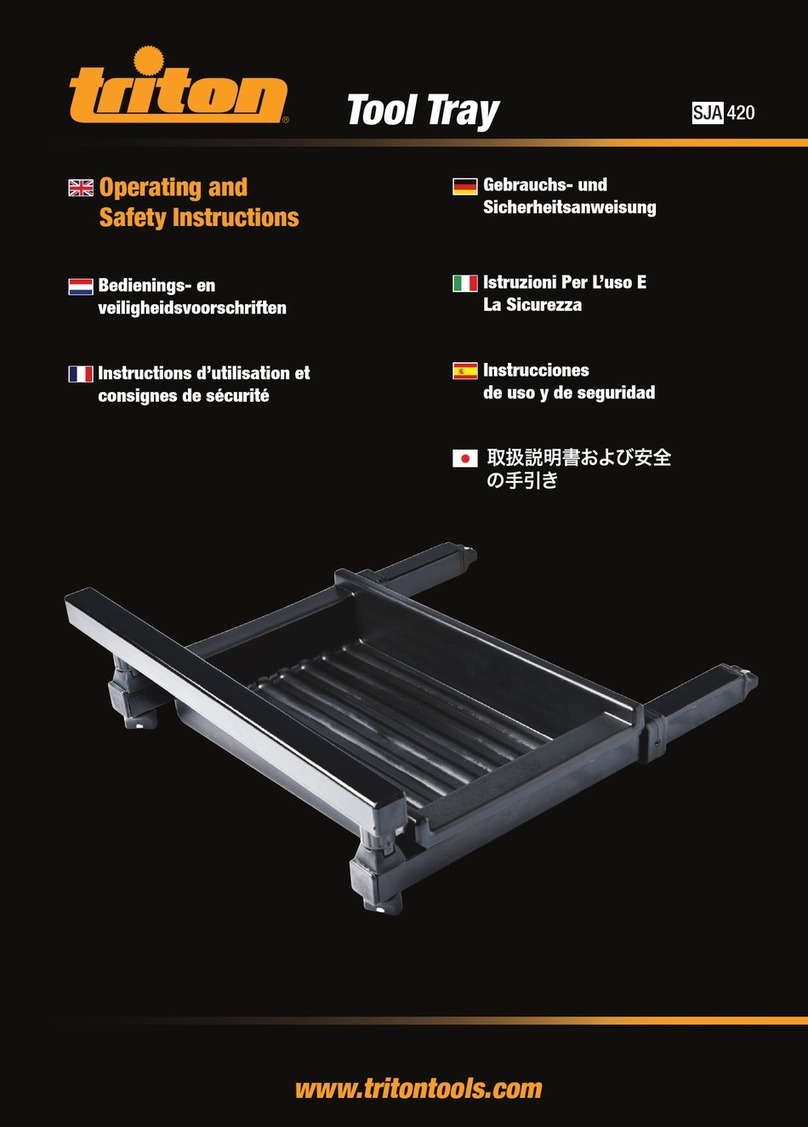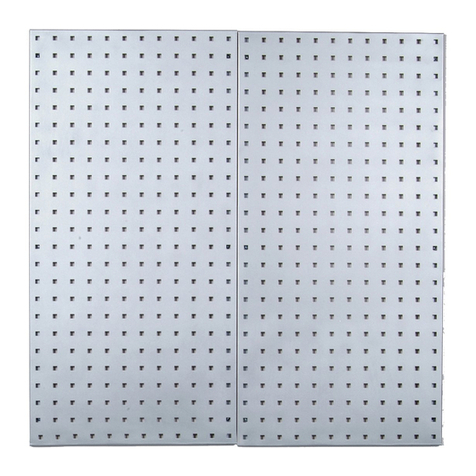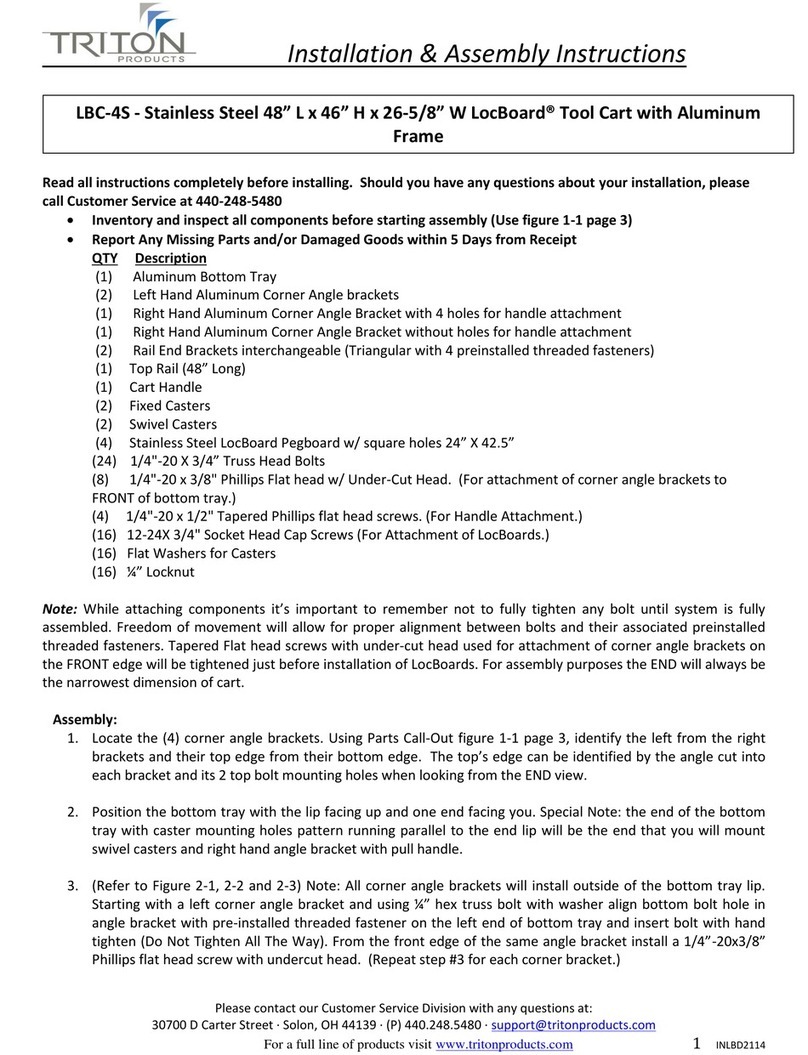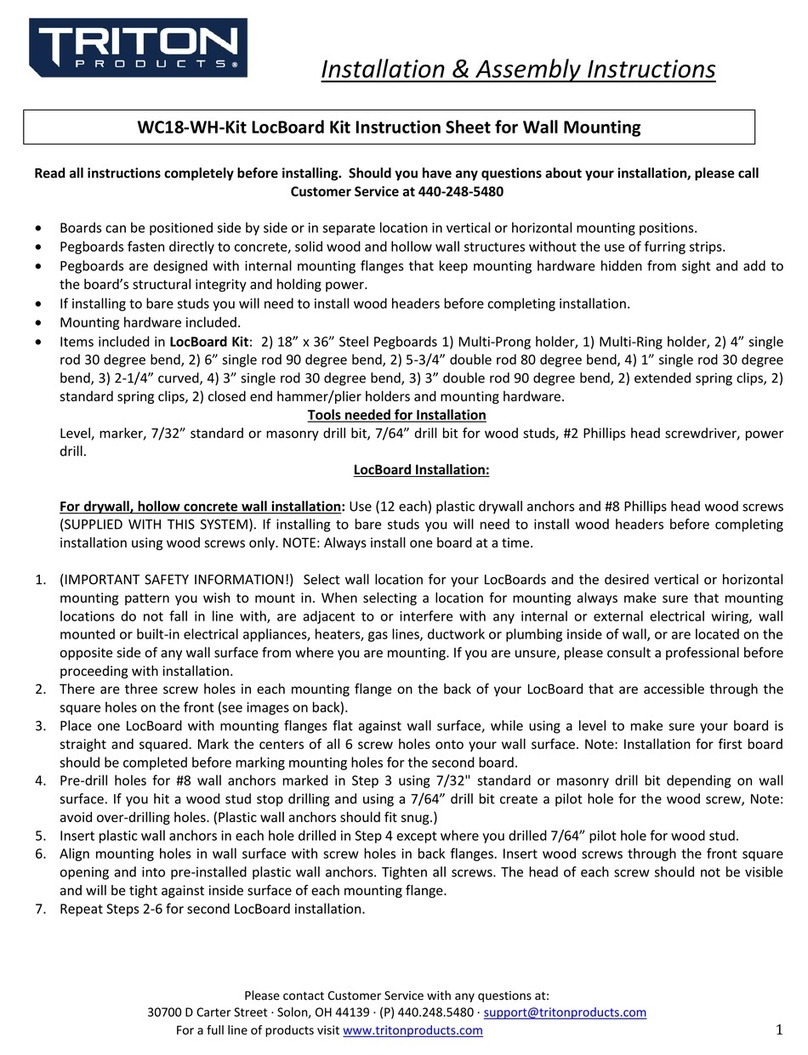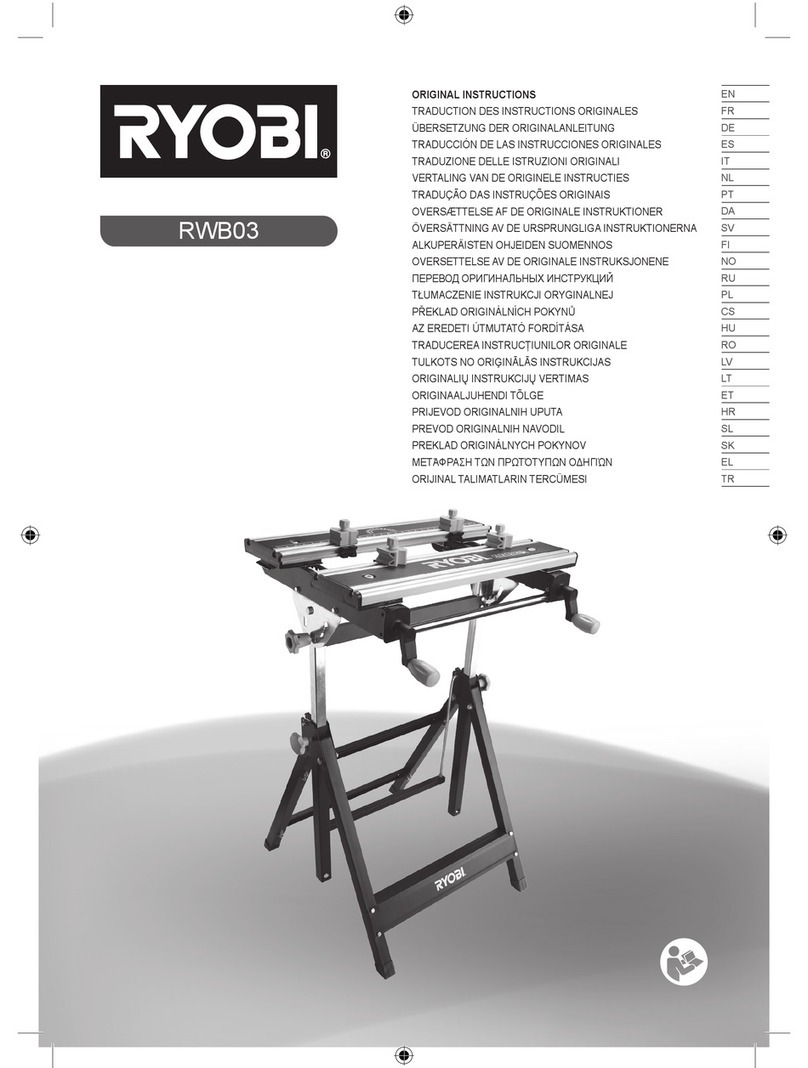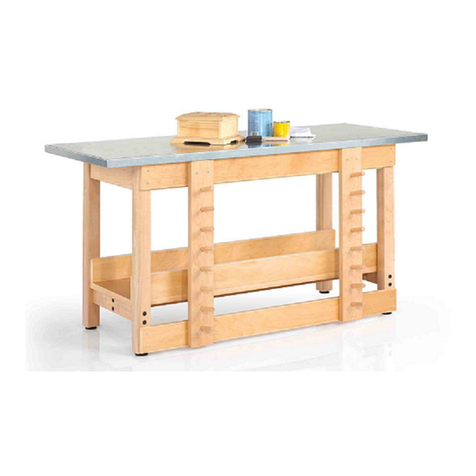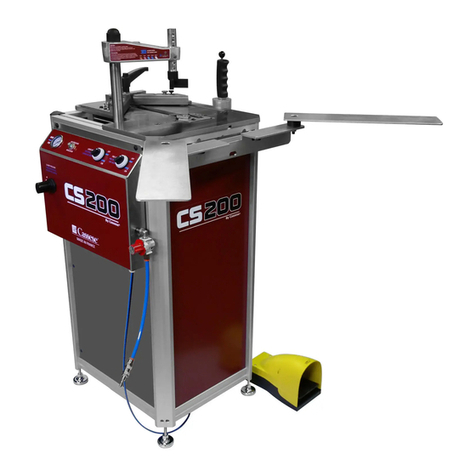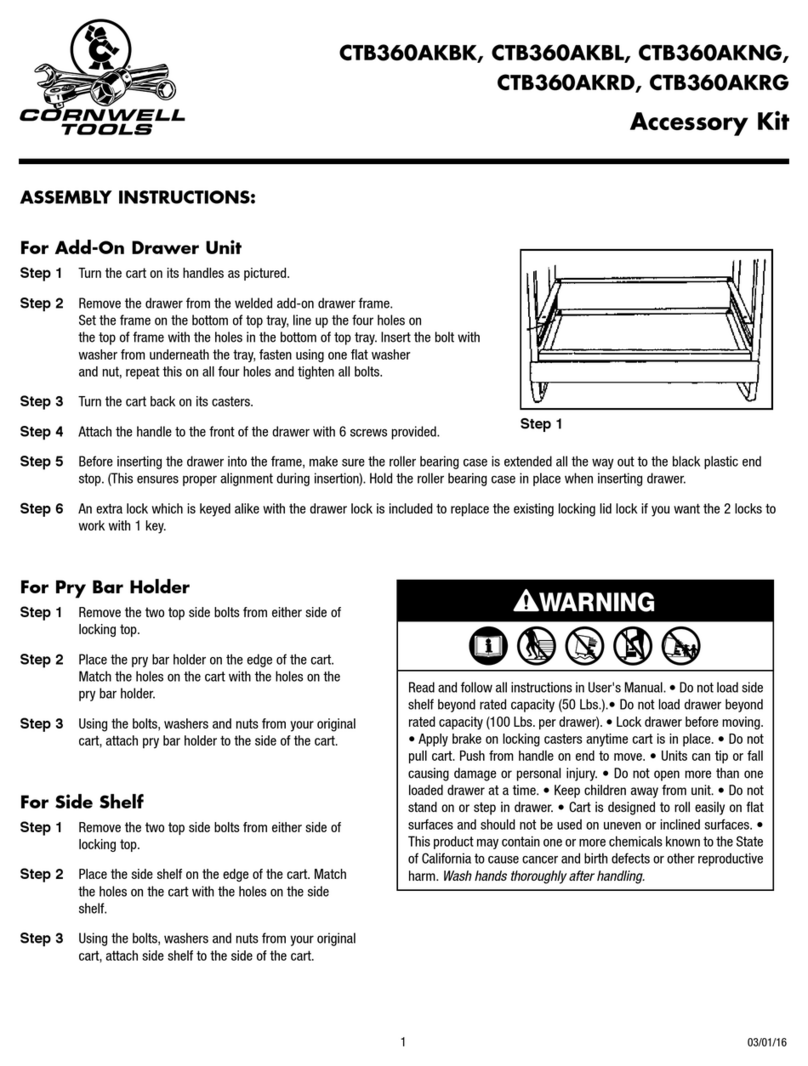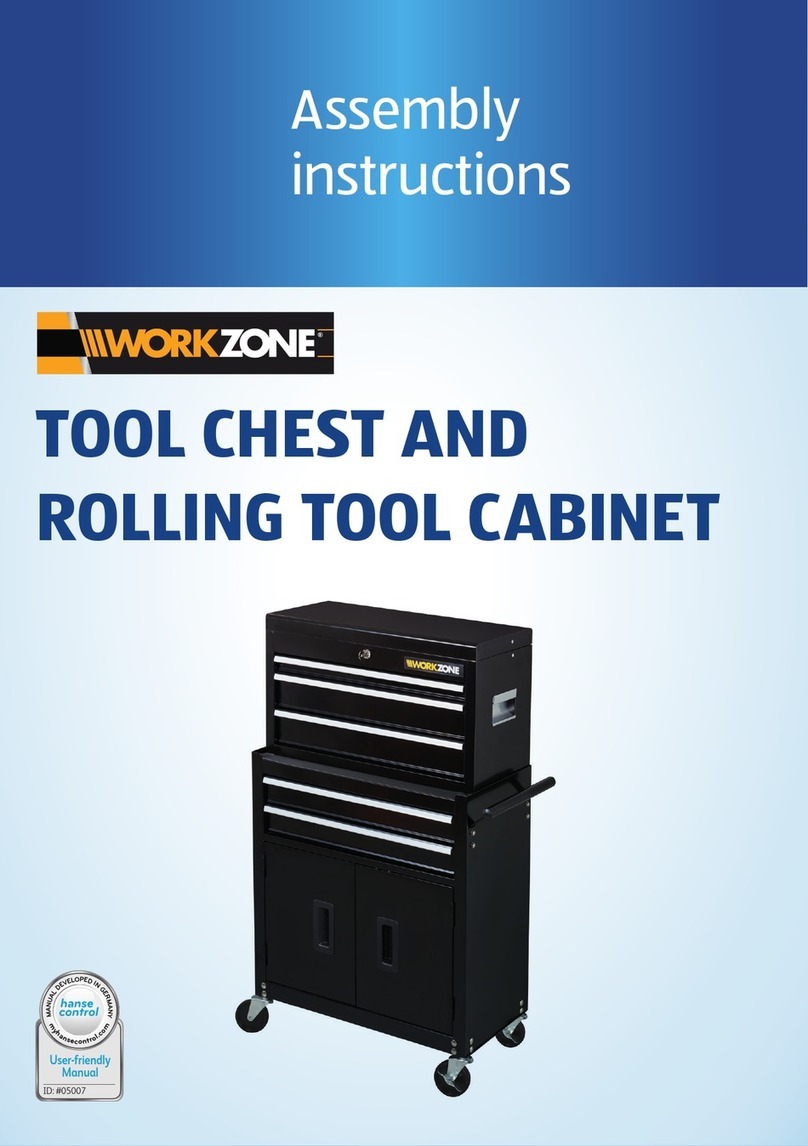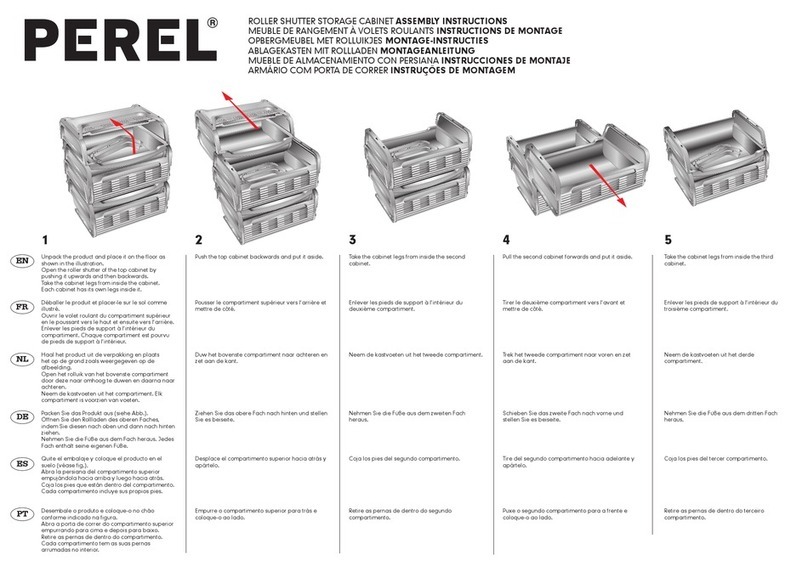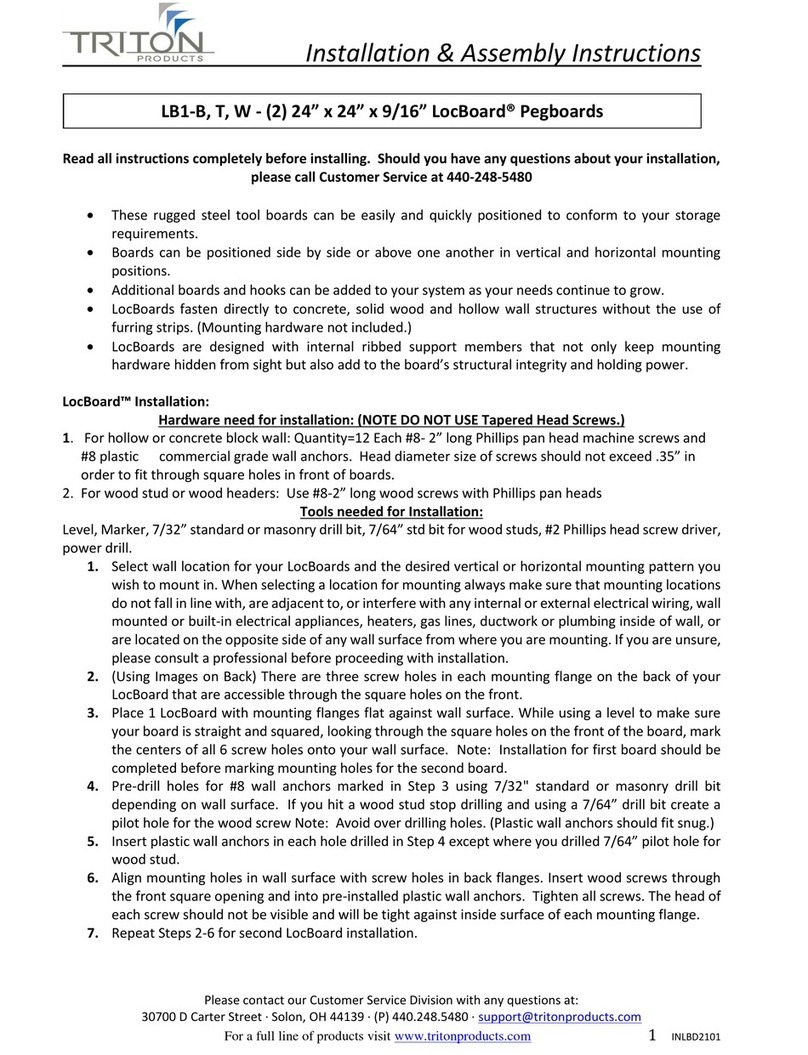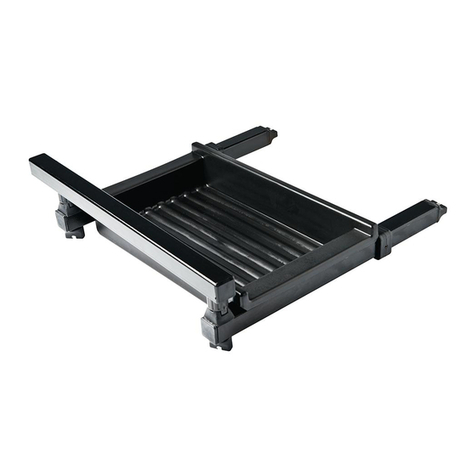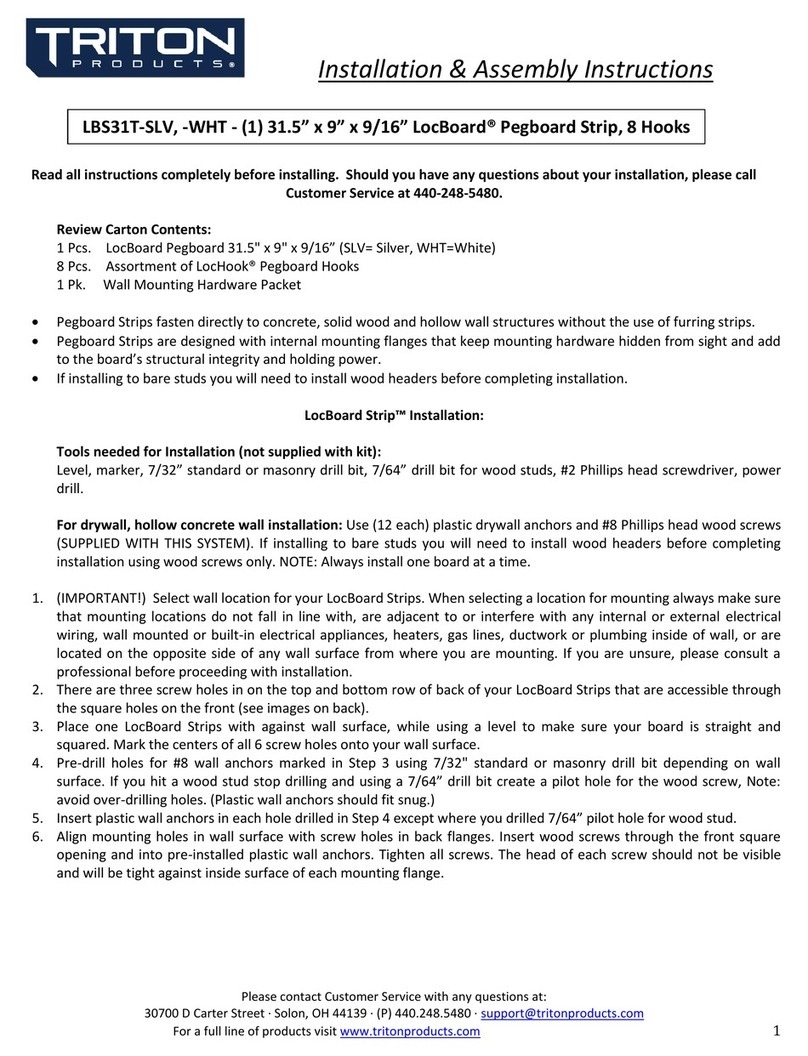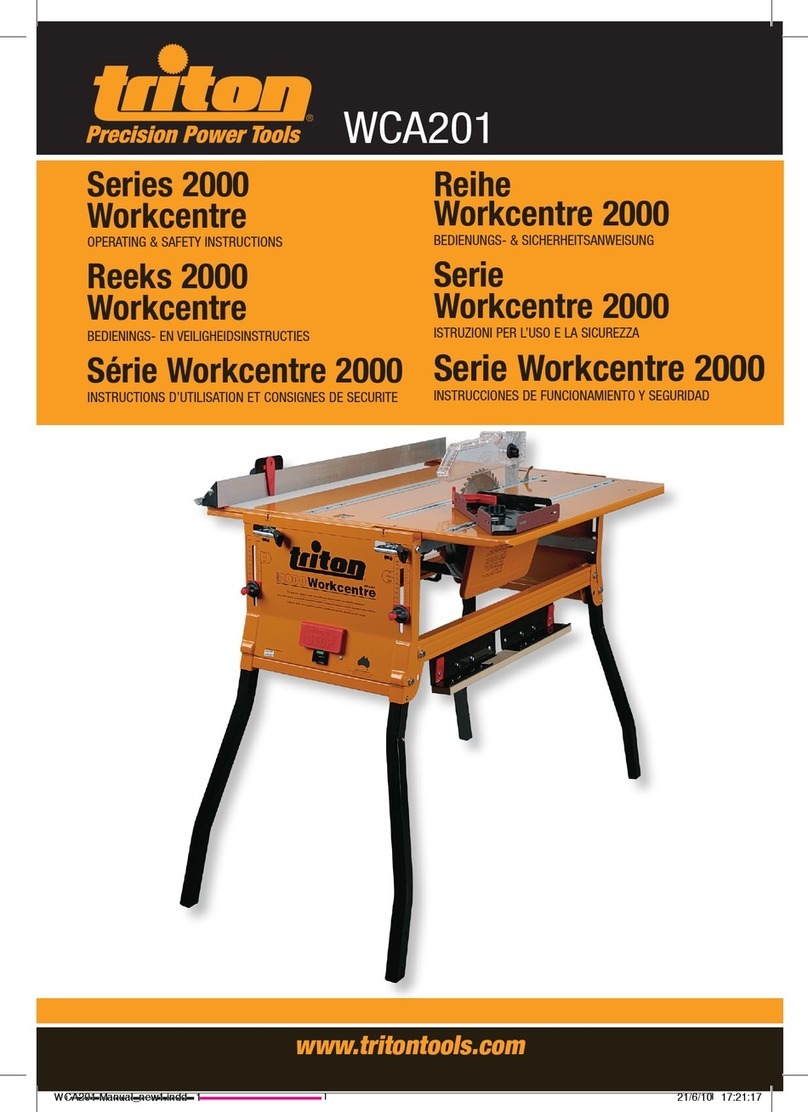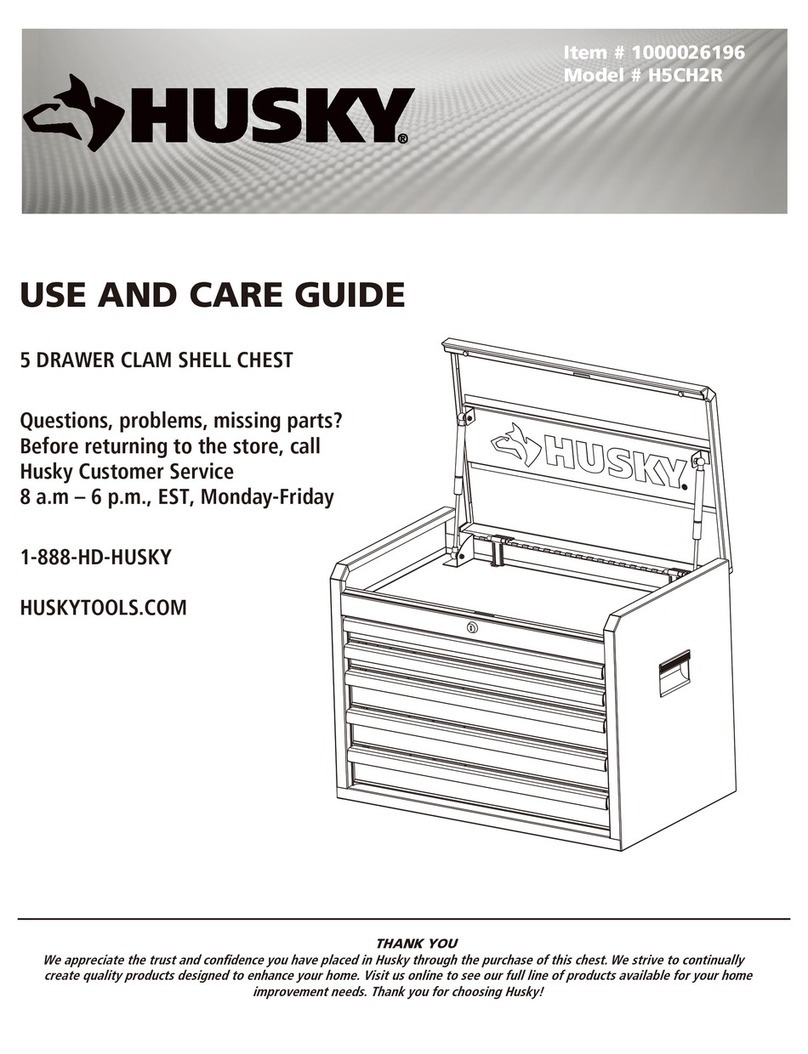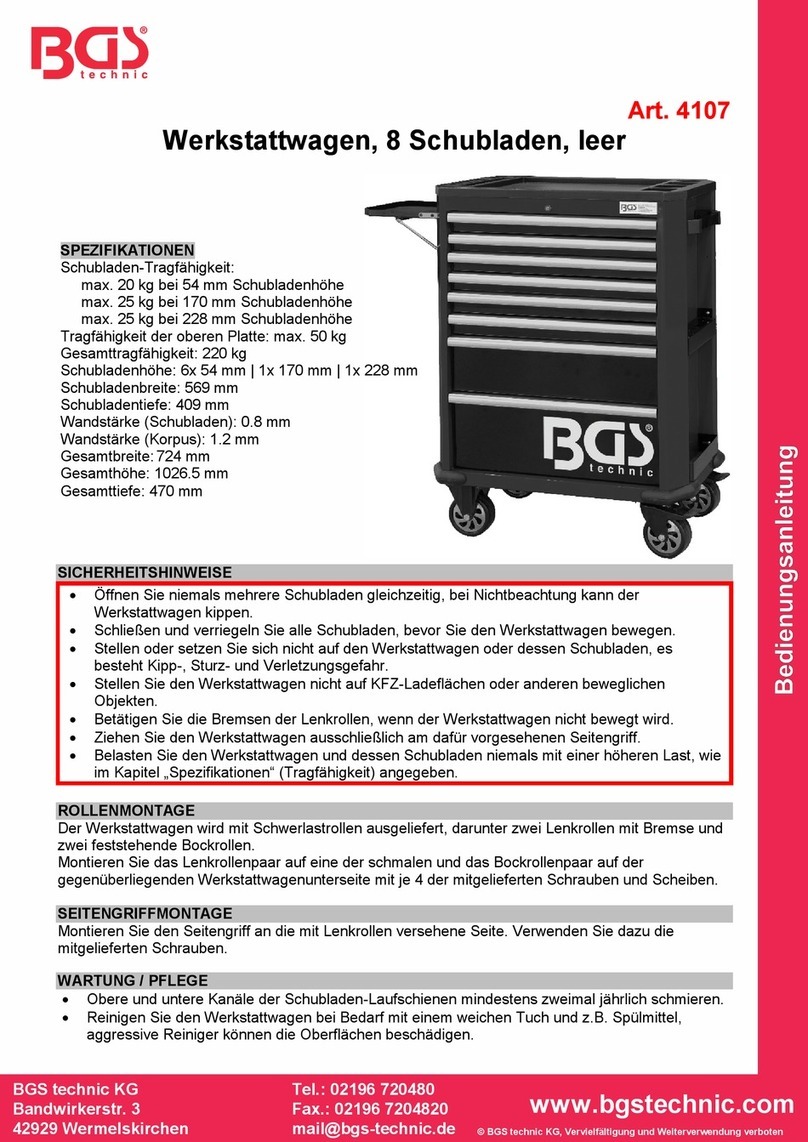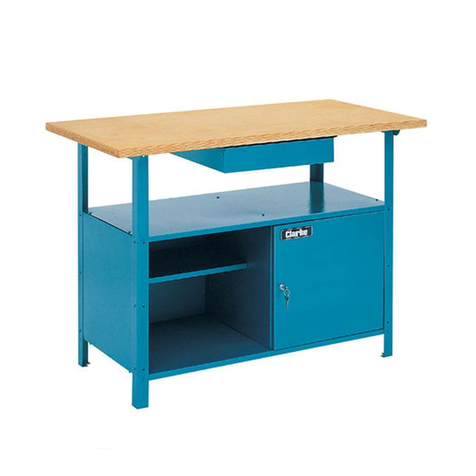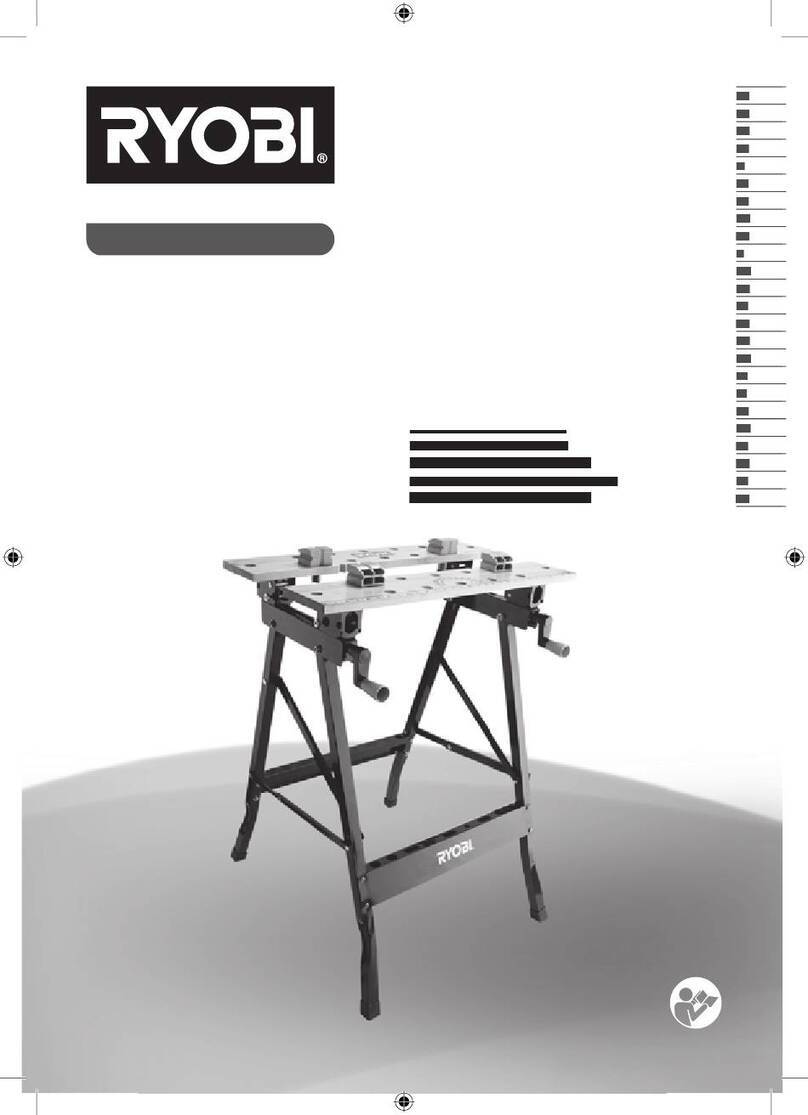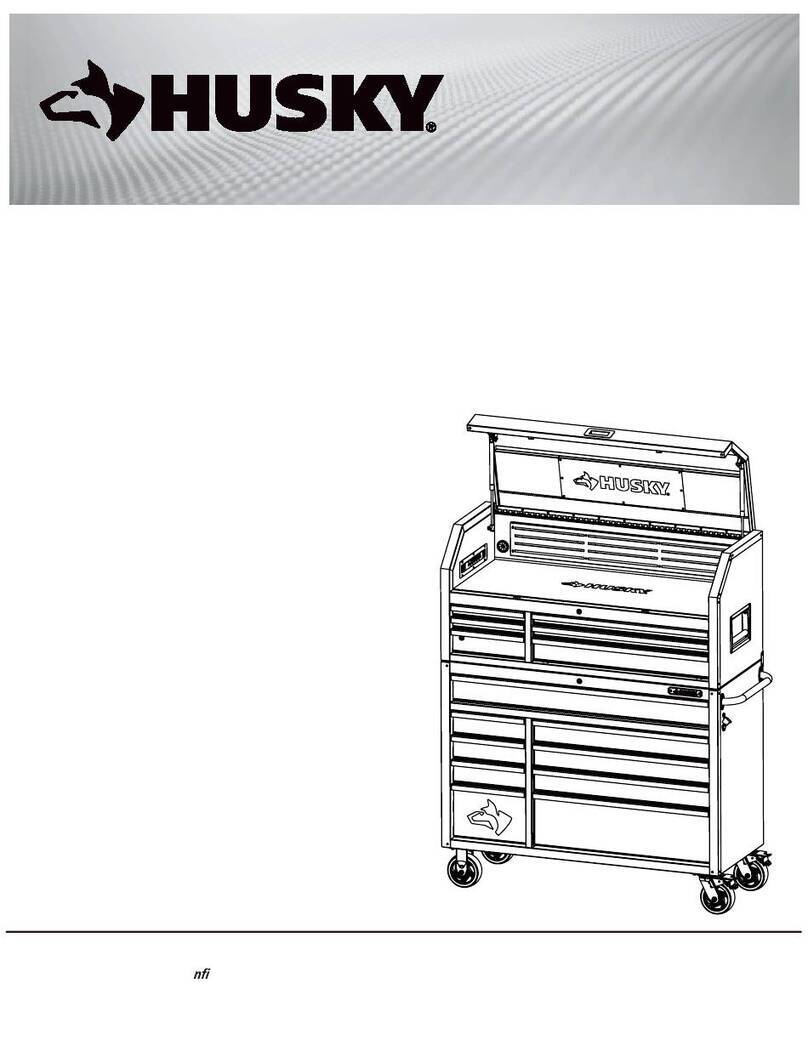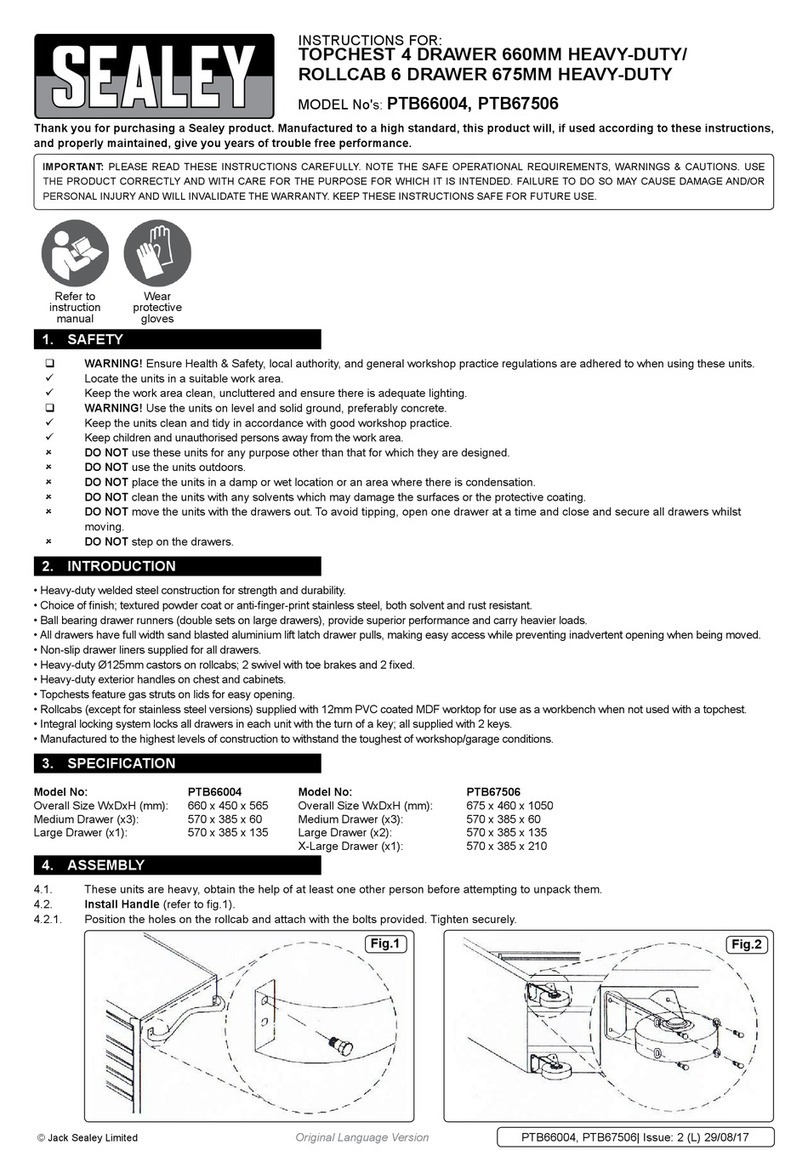
7
Product Familiarisation
1. Fixed Jaw Urethane Face
2. Moving Jaw Urethane Faces (2pce)
3. Moving Jaw Locking Tab
4. Body
5. Rear Leg Locking Knob
6. Rear Leg
7. Foot Plates
8. Foot Pedal
9. Front Legs
10. Foot Pedal Locking Latch
11. Front Leg Locking Knobs
12. Extension Tray Mounting Holes
13. Lock / Release Switch
14. Fixed Jaw
15. Moving Jaw
Intended Use
The SuperJaws Portable Clamping System is a portable work holder which clamps a variety of
workpieces for a multitude of different applications.
• Carefully unpack and inspect your tool. Fully familiarise yourself with all its features and
functions
• Ensure that all parts of the tool are present and in good condition. If any parts are missing
or damaged, have such parts replaced before attempting to use this tool
Unpacking Your Tool
• Carefully unpack and inspect your tool. Fully familiarise yourself with all its features and
functions
• Ensure that all parts of the tool are present and in good condition. If any parts are missing
or damaged, have such parts replaced before attempting to use this tool
Before Use
Setting up
1. With SuperJaws placed upside down on the ground, loosen the Rear Leg Locking Knob (5)
and slide the Rear Leg (6) from its storage position (Image B)
• Pivot the Rear Leg just clear of the front face (Image A)
• Slide it all the way forward then lift and slide it fully into its housing at the rear, then tighten
the knob (Image C)
DO NOT extend the rear leg beyond the marked line (Fig. I)
2. Raise the Foot Pedal (8) until it ‘clicks’ into position (Image D)
3. Pivot the Front Legs (9) out as far as they will go (Image E), then turn the Front Leg Locking
Knobs (11) clockwise; until the rounded section of the knob tightens onto the leg housing, as
shown (Image F & G)
• Several turns may be necessary on initial set-up, until the clamps tighten into place. A half
turn is all that is required to release the legs when folding
4. Turn SuperJaws upright and recheck all legs are locked firmly in position (Image H)
5. Rotate the Moving Jaw Locking Tab (3) to the horizontal position (Image I). SuperJaws is now
ready for use
Folding
Folding is the reverse procedure of the steps described above. Ensure that:
• The Lock / Release Switch (13) is in the ‘unlock’ position (Image J)
• The Foot Pedal Locking Latch (10) is used to release and fold the Foot Pedal (8) (Image K)
• The Moving Jaw Locking Tab (3) is in the ‘vertical’ position to prevent the jaw from sliding
out (Image L)
• The Rear Leg (6) is engaged fully into its housing, and the Rear Leg Locking Knob (5) is
tightened firmly (Image M)
• When in its folded position, the Rear Leg becomes a carrying handle, for easy transportation
(Image N)
Operation
Clamping
1. Check that the Moving Jaw Locking Tab (3) is set to the ‘horizontal’ position (Image O), and
push the Moving Jaw (15) back until your workpiece fits between the jaws (Image P)
2. Place the workpiece against the Fixed Jaw (14) and slide the moving jaw forward until it
touches the workpiece (Image Q)
Note: The jaw can also be advanced forward by pressing the Foot Pedal (8) repeatedly.
3. Slide the Lock / Release Switch (13) down to the ‘lock’ position (Image R)
Note: If preferred the switch can be locked after the work is clamped.
4. Apply downward pressure on the Foot Pedal (8) until sufficient clamping force has been
applied (Image S)
Note: For extra force you may stand on the Foot Pedal (maximum 100kg), but do not jump on
it, as you could damage the unit.
Releasing
1. Slide the Lock / Release Switch (13) up to the ‘release’ position (Image T)
2. Push on the Foot Pedal (8) then allow it to return up and release the workpiece (Image U)
Note: Ensure you are supporting the workpiece to prevent it from falling once the jaw is
released.
Note: If you have clamped the object very tightly, you may need to exert more pressure on the
Foot Pedal before it will release.
3. Slide the Moving Jaw (15) back, and remove your workpiece (Image V)
Clamping on one side of the jaw
• Some large or awkward workpieces can only be clamped on one side of the jaws (Image W)
Note: Always fit a spacer (the same thickness as your workpiece) to the other side of the jaws,
to prevent the Moving Jaw (15) from skewing.
Clamping large objects (460mm to 956mm)
• The Moving Jaw (15) can be reversed to accommodate workpieces measuring between
460mm and 956mm:
1. Set the Lock / Release Switch (13) to the ‘release’ position, and ensure that the Foot Pedal
(8) is released (Image X)
2. Check the Moving Jaw Locking Tab (3) is in the horizontal position (Image Y)
3. Slide the Moving Jaw fully from its tracks (Image Z)
4. Rotate the Moving Jaw by 180°, and re-insert it into the tracks (Images AA & AB)
Notes:
• When clamping objects with the Moving Jaw (15) reversed, ensure the workpiece sits down
onto, and is parallel to, the sliding jaw. Avoid clamping workpieces at the top of the jaws
(with a gap between the workpiece and the base of the Moving Jaw) as excessive pedal
pressure could damage the unit
• When clamping large or heavy materials, provide outboard support (such as a MSA200
Triton Multi-Stand 330090) to prevent SuperJaws from tipping over
Using as an anvil
• The fixed jaw is sufficiently robust to be used as an anvil for strip metal work (Images
AC & AD)
• Do not use the Moving Jaw as an anvil, as this could cause damage
• For thicker materials we recommend the use of the optional SJA470 Engineers’ Jaws
(product code 330120)
Using as a press
• When the Lock / Release Switch (13) is in the ‘release’ position (Image X), SuperJaws can
be used as a press (Image AE)
• With each full stroke of the Foot Pedal (8), the Moving Jaw (15) will advance approximately
25mm (1”)
Ripping a plank
1. When ripping a plank, stop cutting before reaching the jaws (Image AF)
2. Remove the workpiece and re-clamp with sufficient amount of the cut beyond the jaws,
so that you can drop in your saw to recommence your cut
3. Before clamping, insert a spacer slightly thicker than your saw cut, at the jaw area, to
keep the cut open (Image AG)
Clamping square tubing
• Square tubing or similar can be clamped diagonally into the jaws using the V-grooves for
easier, more precise sawing (Image AH)
Note: Use the V-grooves in the urethane jaws to securely hold your material.
Sharpening chainsaws
• SuperJaws is ideal for clamping a chainsaw or chain blade while sharpening the teeth
(Image AI)
Note: If sharpening a chainsaw, use two wooden blocks, either side of the bar, to ensure the
clamping jaws are clear of the chain, which can then be rotated as each tooth is filed.
Outdoor use
• SuperJaws is ideal for outdoor use. However, if SuperJaws gets wet, it is important to dry
the tool to prevent corrosion. Also re-apply any oil or grease that may have been affected
by rain
569497_Z1MANPRO1.indd 7 26/05/2016 10:18
